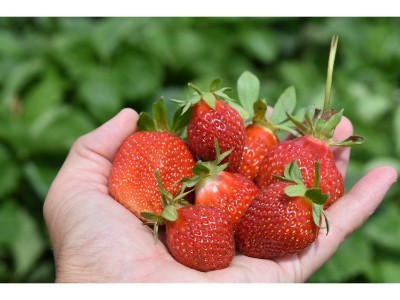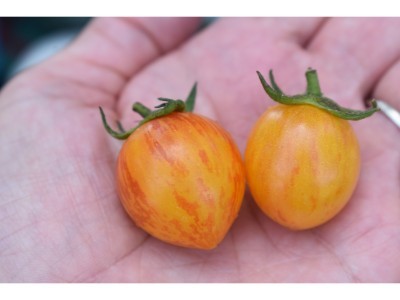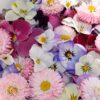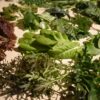A word about water and weather
What did I say last week about it not being hot? Was I out of my mind?! Goodness me, this past week had some scorching temperatures (I'm Auckland based)... and no rain to speak of...
 So how do you water when it's hot?
So how do you water when it's hot?
I prefer to do :
1) a good soak, a few seconds on each plant,
2) early in the morning,
3) close to the soil,
4) every other day.
Make sure your water perculates the soil and goes down deep, rather than running off. This deep watering less often is better than more regular shallow sprinkles because you encourage the roots of the plant to grow deeper, not "hang about" on the top layers of soil where they can quickly dry out and burn in the heat of the day. Earlier in the day is better simply because less evaporation takes place. And closer to the soil is said to be better too, although I've heard it another way too - apparently an arc of spray picks up positive ions in the air ...but this warrants much more research. There's a school of thought that reckons water drops on leaves act as a magnifying glass in sunlight and can end up burning your leaves - but the science is still out on this one too with a few places confirming, and others refuting it. I've never had drops on leaves be a problem, so don't think it is that big an issue in any case, but you can make up your own mind on it.
Remember that plants in pots need much more regular watering, so if you are container growing, you're going to be out there with a watering can almost every day....perhaps twice a day!
Harvesting
There's lots to harvest it the food garden at the moment - I'm going out each day and coming in with a basket full of heirloom tomatoes, cucumbers (and gherkins), beans, carrots, silverbeet, spring onions, and herbs (parsley, chives, thyme, oregano, rosemary, sage...etc). The sweet and hot peppers are all starting to form fruit too - just look at these beauties:
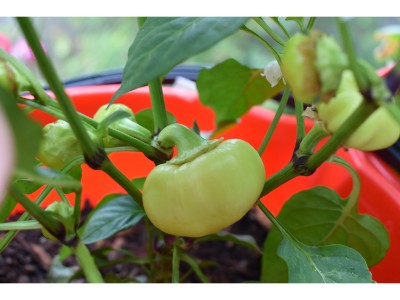
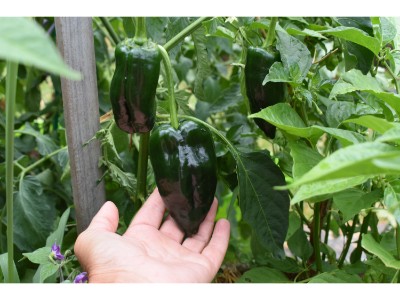
Seed Saving
It's not just the produce I harvest this time of year, but also the seeds. I'm an avid seed saver, and seed collector. There is just an added bit of pride come next growing season when you whip out your packet of seed and see that it was from your own garden... it closes the cycle up so beautifully! And there's the added benefit of some of the location specific growing conditions of the plants in your garden being "encoded" in the genes of the seeds, so the more you grow from your own stock, the better adaptable the plants should be to your garden's environment. Just don't forget to bring in some new seed every now and then for genetic diversity too! Better yet, share with a friend in the same geographical area, or with similar micro climates.


I've done quite a few articles on different ways to save seed in previous blog posts, so just do a search for "seed saving" on the website and you'll find a good few examples. But to get yous tarted, here's a quick image on how to save wet seeds, like tomato seeds:
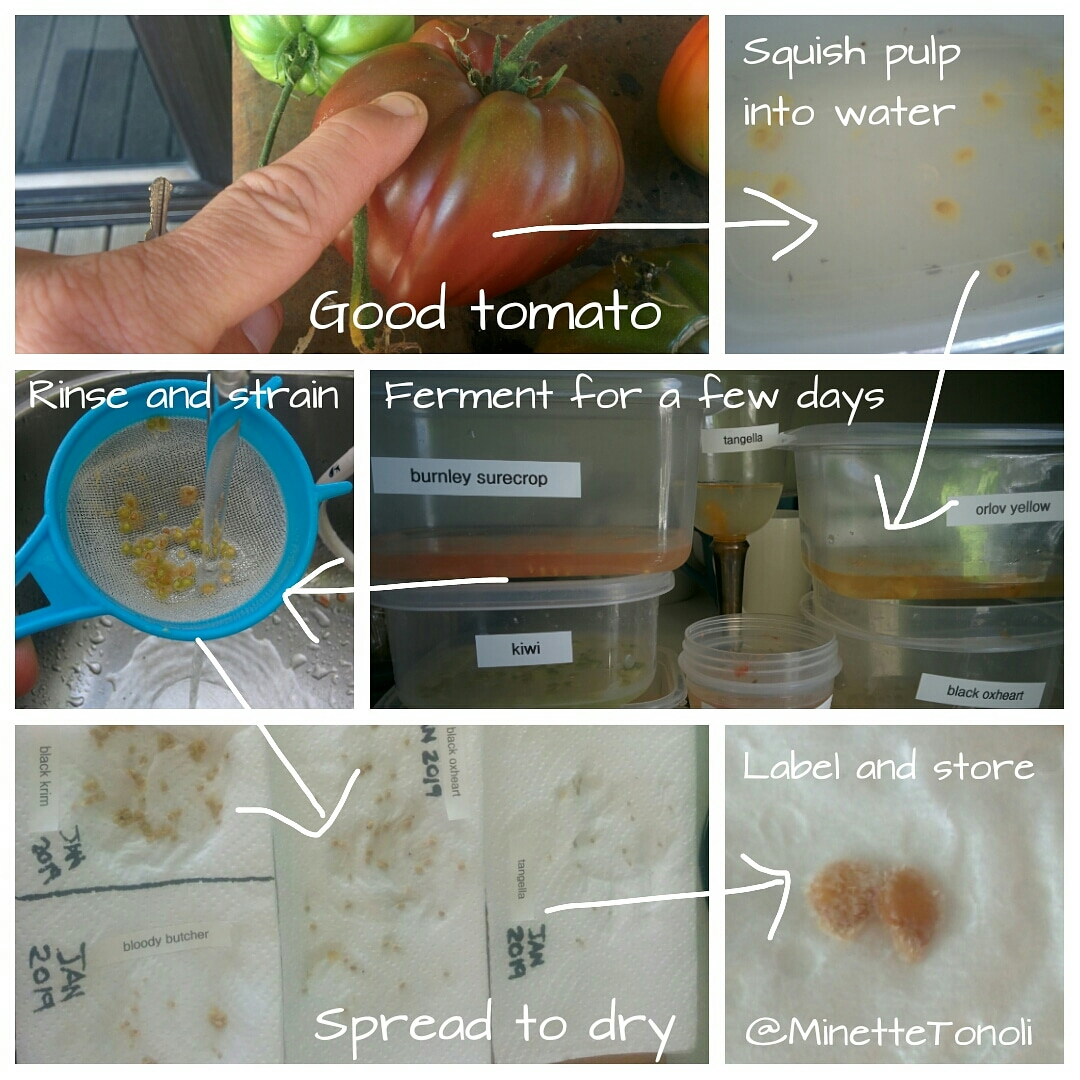
Sowing and Growing in January
It's all good and well that we are in the middle of the most productive season in the garden, but what can you plant now to make sure you have some more to harvest before, or for, winter? Perfect timing to propagate and plant now, as we have just passed New Moon (6 Jan), and according to the Lunar Calendar, the 10-11 days following New Moon is the best time to sow, make cuttings, and plant above-ground crops.
January is a good time to:
SOW
- Fast growing leaf vegetables and herbs like lettuce, mustard greens, coriander and rocket
- The first of your winter vegetables such as kohlrabi, cabbage and Brussels's sprouts. Sow silver-beet, beetroot and spinach as well as parsnips, peas and other cold-tolerant vegetables.
- Flowers, including violas, primulas, poppies and sunflowers.
Click here for a detailed sowing guide for January.
PLANT
- Seedlings of summer vegetables that will still grow and develop quickly for another crop before winter sets in, e.g. zucchini, eggplant, tomato (especially cold season tomatoes such as Subarctic Plenty, Russian Red and Tobolsk), capsicum and chillies.
- Calendula, alyssum, dahlia, bergamot, and coneflower (Echinacea)
SET OUT
- Spring flowering bulbs like Anemone and Ranunculus
- Seed Potatoes for an autumn harvest
A bit more on Chillies
I'm a bit of a chilli-head, okay, a lot of a chilli-head, and am growing a lovely selection of over 40 varieties of capsicum. Growing and using chillies, is still one of my most requested talk topics, and no wonder, as worldwide, the interest in these hot little numbers have surged. Some stores in Britain claim sales of chilli related products have tripled the past three years, and many new international websites offer specialist selections of chilli plants and seeds for the growing numbers of the chilli-obsessed. Not to mention the selections available at garden centers in our own backyards too. Since I moved to NZ 6 years ago, each year saw the named varieties nearly double at my local plant shops.
This is a selection of my chilli harvest from last year:
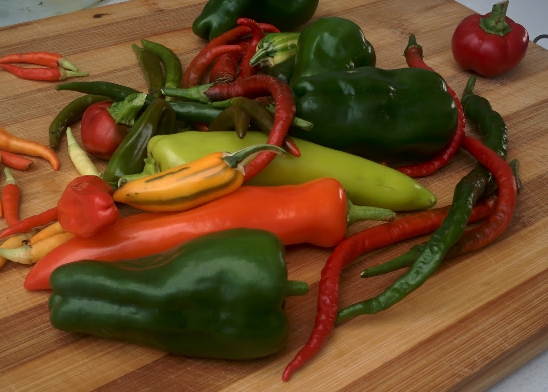
In flower and fruit
A few things that caught my attention in the garden this past week:

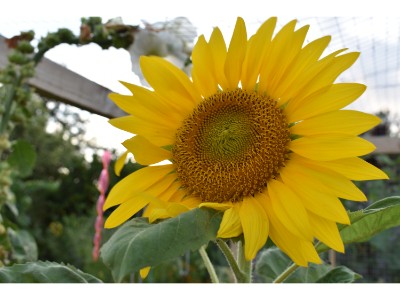
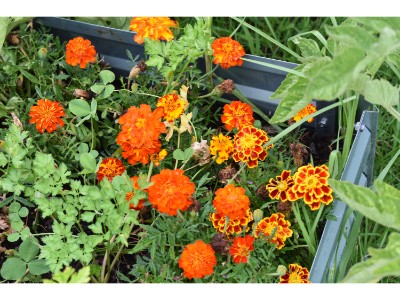
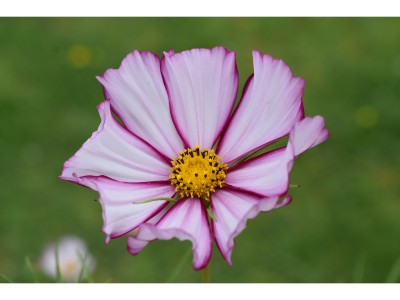
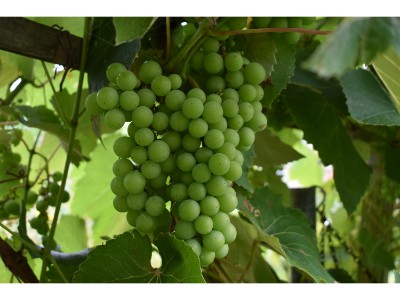
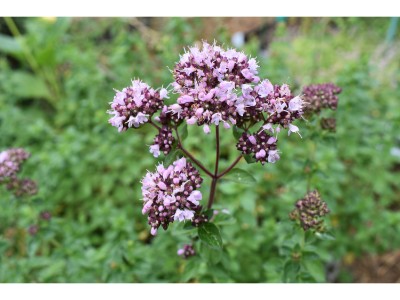

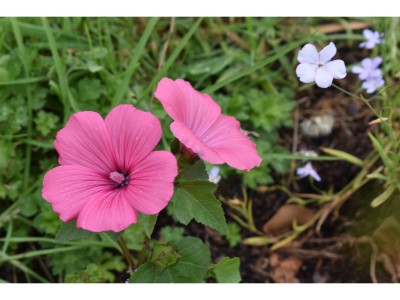

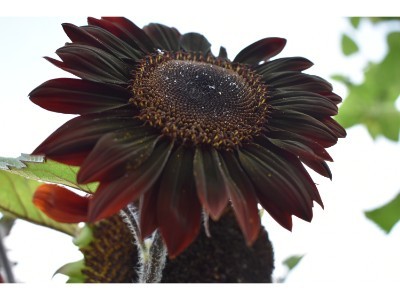

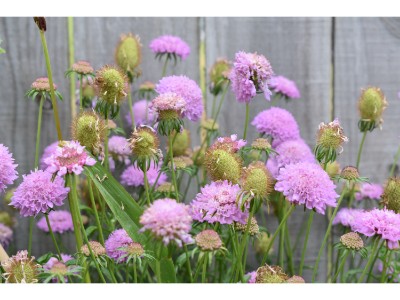

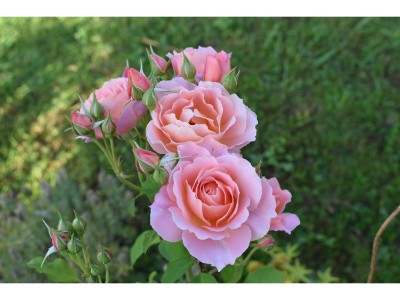
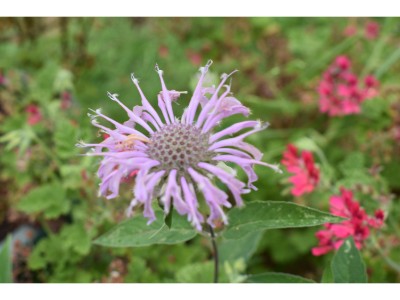
Made It
This week I got to make:
- An heirloom tomato tart with basil-semolina crust and garlic infused balsamic reduction (tomatoes, basil, garlic from the garden)
- Liquorice Tea
- Roast Purple Maori Potatoes with Garlic and Rosemary (all veg and herbs from the garden)
- Dill Sauce (fresh Dill from the garden)
- Strawberry jam with balsamic vinegar and black pepper (from strawberry farm picking)
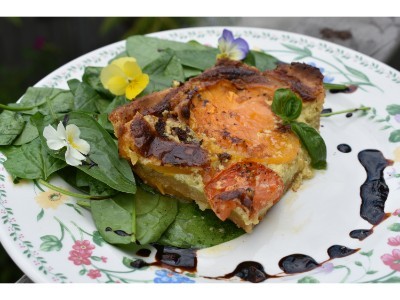
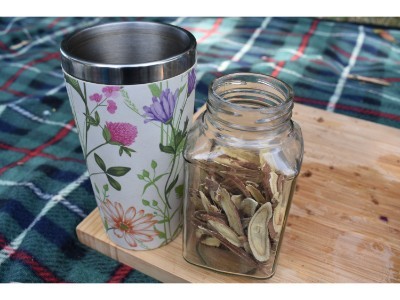
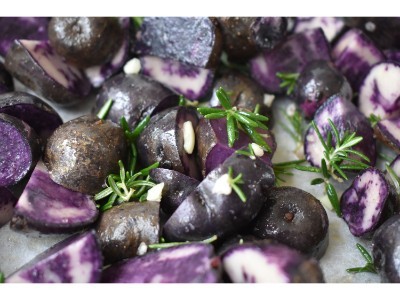
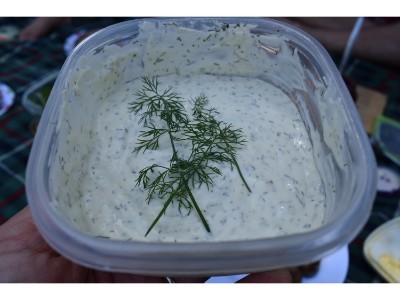
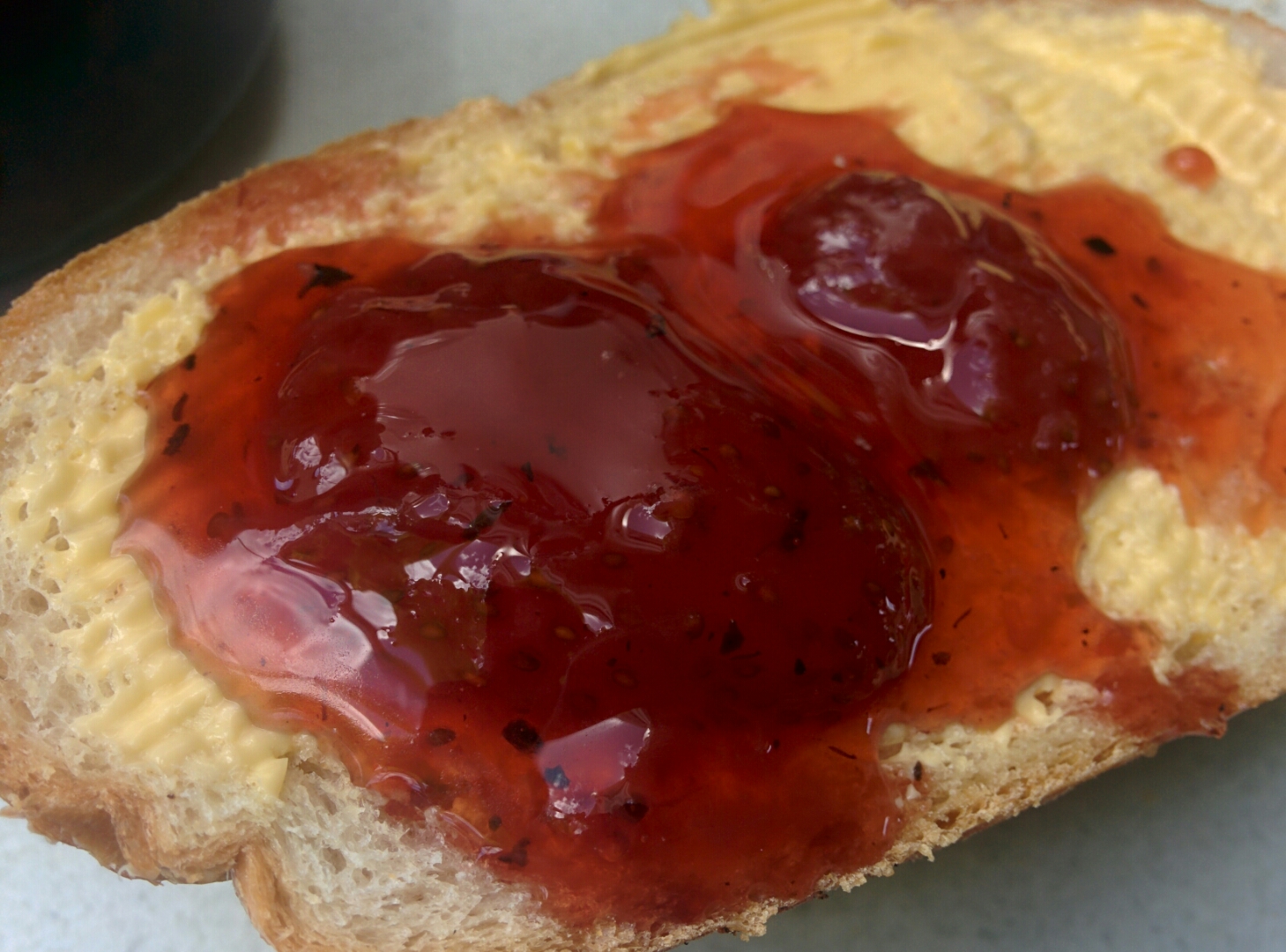
This week I learnt:
I have no constraint when it comes to harvesting or picking - I ended up with 8.5kg of strawberries from the Pick-Your-Own strawberry farm!
Bee stings under your little toe really hurts - more than any other bee sting I've ever had!
